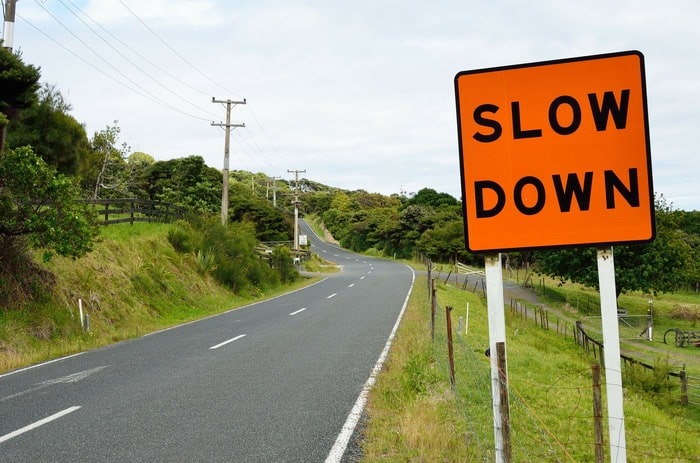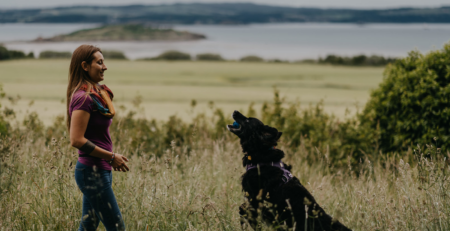Advice From the owners of separation anxiety dogs
admin2021-05-07T10:55:29+00:00Finding expert help for your dog’s separation anxiety is one thing, but by this point in your research you may well be wishing you could hear from other owners like you. People who are living with a separation anxiety dog every day and who are working, or have worked, through a plan to successful cure their dog’s problem!
Separation training can feel super lonely at times, but I promise you aren’t alone and there are LOADS of dog owners in the same shoes, who also want to train their dog using fear-free and science lead training methods.
Join a separation training community
I asked some of my clients and other dog owners with separation anxiety dogs what advice their would give other people struggling to tackle separation anxiety in their pets, and I’ve listed the responses below.
Before we get to that though, I wanted to point you towards a community that I can’t recommend highly enough if you feel you need the support of a caring, like-minded and expert lead group of just down right awesome people!
I love Julie Naismith’s Separation Anxiety Heroes so much that I recently became an affiliate of the programme. I am just so impressed with Julie’s tireless passion and energy in helping separation anxiety dogs and owners, and the group is hands down the most supportive and positive group of owners and trainers you could ever wish to meet. I have no doubt that they will help you better understand your dog’s separation anxiety and empower you to start your training, so do check them out!
Tips from Separation Anxiety “Owner-experts”
No one knows separation anxiety dogs better than those who live with and love them. Except maybe those who have lived with, loved and helped them to overcome these issues. Here are some tips and pearls of wisdom from people who have all been where you are now. I hope you find them useful!
- “Don’t just fixate on the separation issues your dog is having, try to look at the bigger picture too. It’s hard not to get bogged down, but by ensuring I learnt about and implemented lots of enrichment, kept Angus calm and happy through the day and learned about reading him and communicating well, I feel our separation training immediately got better and we started having a lot more successes. It makes sense when you think about it – if you don’t understand and can’t communicate, how can you teach them it’s okay to be alone?”
- “I wish I had started training sooner. I wanted so badly to get things right that I researched and researched and researched, very quickly beginning to feel overwhelmed and ultimately paralysed by the fear of getting things wrong for my gorgeous Coco. I was so scared I would screw it up and now I release that the waiting was probably my worst mistake! We’re on track now but my best advice to anyone having the same issue would be find an expert programme or someone to help make a training plan and just get training!”.
- “Expect set backs in your separation training. To be fair my trainer told me this at the start lol, but because things went so well to start with I didn’t really believe her and then was absolutely devastated the first time my dog didn’t manage an absence well. I think it is normal to question what went wrong but really you just have to accept it and move on, adjusting your training as you go. I learned not to expect a nice predictable straight road (as if life could be that kind?!), but to expect bumps and swerves along the way. I am thankful looking back that I used a camera to watch so I was able to catch on straight away that Glenn wasn’t settled (the first time he started barking right after we left!) – so I just made the next training absence easier and got him over that bump!”.
- “If I could help people learn from my experience I would say that being open to discussing medication early on could be the best gift you give your dog (and your separation training!). It took me a while to understand that my dog was simply too anxious to learn and to be honest I feel I wasted both time and money hoping for miracles from herbal remedies and an adaptil collar, and all the while my dog was still stressed when I left him. His anxiety was a physical problem that had a physical solution, and getting that addressed allow him to start learning to feel okay when I left him”.
- “Be careful who you listen to!! Lots of people will promise you they have the solution to your dog’s separation anxiety! Others will make you doubt yourself. If you watch any TV show about dog behaviour they will almost certainly have you feeling like you have failed. Guess what? You haven’t and the show you are watching is highly edited and don’t show even 5% of all the effort that really goes into treating a problem like separation anxiety (also they are likely really awful to the dogs off camera). Be strong, and remember that you are probably one of the very few people who really does understand separation anxiety, and you are definitely the one who understands your dog knows what is best for them. If people criticise or blame you – try to let it slide off (I know it is really hard sometimes): they simply don’t understand and it is not always worth your time and energy to explain.”
- “If you think you are going too slowly then you probably need to slow down! My trainer taught me this but it is so true! Every time I have the temptation to rush ahead and try to leave Georgie for longer, I remind myself that my needs and my dog’s needs aren’t actually at odds. By pushing her to be alone for longer than she is comfortable I risk getting further away from the freedom I crave. It is human nature to try and take giant leaps when we really want something – but separation training is all about building up calm and safe alone time for your dog and pushing them out of their comfort zone too quick actually does the opposite.”
- “Have a plan and set realistic targets. Assuming you are able to suspend absences and stop triggering your dog’s separation anxiety, you can then focus on quality of training not quantity. If you can only train twice a week without feeling overwhelmed then set your target there. Get a note book and write down a plan for your training and keep it up to date with how things went. Learning to reflect on your training and then adjust it net time is an essential skill in separation training I have discovered. Just be kind to yourself and don’t beat yourself up for not doing enough – you’re doing your best and that’s what counts.”
- “It is better to hire a trainer sooner rather than later. Separation anxiety quickly becomes costly, not only in paying for day care but also in terms of your mental health and the relationship you have with your dog and even other people. Finding a truly expert separation anxiety trainer as soon as you can might actually save you money in the long run and will definitely give you confidence that you are on the right track.”




